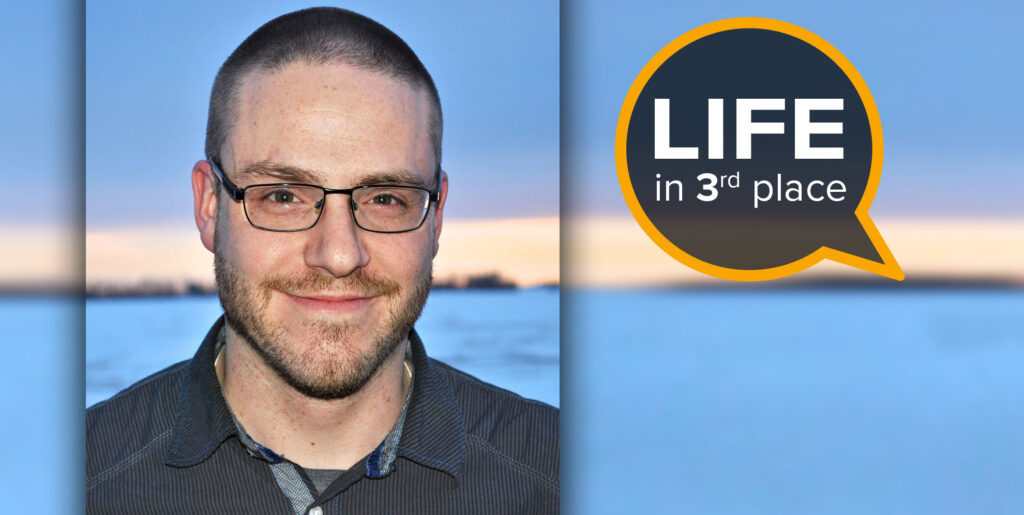The eighth chapter of John’s Gospel begins with what I assume must have been a pretty ordinary day in the life of Jesus. It says that “early in the morning he came again to the temple. All the people came to him and he sat down and began to teach them” (John 8:2).
Sounds nice, right? Just another rabbi in the temple teaching the crowd gathered around him. But this peaceful scene changes quickly, as we go on to read that “…the scribes and the Pharisees brought a woman who had been caught in adultery; and making her stand before all of them, they said to him, “Teacher, this woman was caught in the very act of committing adultery. Now in the law Moses commanded us to stone such women. Now what do you say?” (John 8:3-5).
I don’t know that you could find a more awkward scene anywhere in the Gospels. But this woman is there, her sins have been made public, and she alone – not the man she’d been with – is facing death for her sins.
I agree that this isn’t fair and that the punishment is excessive, but I’ve got a different point to make today. We read that the scribes and Pharisees were doing this in order to trap Jesus (John 8:6): either he’d call for mercy and let her go free, making him a lawbreaker, or he’d have her killed – making his message hypocritical when compared to his actions. In either case, they would have succeeded in discrediting Jesus and diminishing his influence over the crowds. You’ll likely recall that it was here that Jesus did something surprising: calling for anyone without sin to “cast the first stone” (John 8:7). In doing so, he was able to diffuse the situation and save this woman’s life.
The whole sequence helps bring to life in a tangible way the mercy of Jesus. But there also seems to be another, deeper lesson here for us to learn.
Put yourself in the shoes of this woman. Throughout this story she encounters men who are ready and willing to use her. First, there’s the man with whom she is having an illicit relationship. As mentioned above, she and she alone faces death for the actions they chose together. I don’t believe that love puts the life of one’s beloved in this sort of danger. Second, the scribes and Pharisees are not intervening in the woman’s life for her sake. Although their care ought to be for her soul and her spiritual well-being, their single purpose in this story seems to be in harming Jesus’ ministry. It isn’t a stretch to say that they don’t care whether she lives or dies. Finally, you have a crowd of people who’ve gone to the temple that morning in order to pray, worship, and learn about their faith – and they are quickly sidetracked with the possibility of a public stoning.
Everyone involved – the man, the scribes & Pharisees, and the crowd – are all too willing to use this woman for their own particular purposes during this incident. And it brings to life something the late, great Archbishop Fulton Sheen said: “You must remember to love people and use things rather than to love things and use people.” This is hard because we live in a world that has a habit of doing the opposite, whether we speak of corporations choosing profits over people or individuals who use one another in relationships for a variety of reasons.
Here in the 21st century, we are facing a much more insidious way of using people: pornography.
While pornography has been around for a long time, the age of the Internet and smartphones has made it readily accessible to people. When you think about it, we’re currently living in the midst of a social experiment: What happens when you raise a generation with limitless, unfiltered access to pornographic content? People continue to get used.
The website Fight The New Drug writes from a completely secular perspective on pornography, like citing this BedBible.com article presenting some of the most disturbing statistics surrounding pornography today (it started out being 10 statistics, but they’ve since updated it to 18). Aside from the money being made and the sheer volume of content being produced, the statistic that bothers me the most is that the average age someone first sees pornography today is 10 or 11 years old. That’s young people in Grades 5 and 6, who often come across this type of content through no fault of their own. But it’s shaping them and teaching them use others like the crowds, scribes and Pharisees, and the man all did to the woman from John 8.
Bishop Paul Loverde, Bishop Emeritus of Arlington, Texas, wrote:
“(Pornography) obscures and destroys people’s ability to see one another as unique and beautiful expressions of God’s creation, instead darkening their vision, causing them to view others as objects to be used and manipulated.”
How do we turn the tide against this habit of using others? I’d suggest it starts by doing what only our Lord did for the woman caught in adultery: He saw the person and neither the bad decisions she’d made nor the politics his enemies were trying to drag him into. We need to similarly resist the insidiousness of pornography drag us in, as pornography is highly addictive, and choose to see others as persons first.
(Need help fighting a pornography habit or addiction? Check out Dr. Peter Kleponis’ Path to Recovery.)
–Mike Landry is the chaplain for Evergreen Catholic Schools. He is based in Spruce Grove, Alberta.

